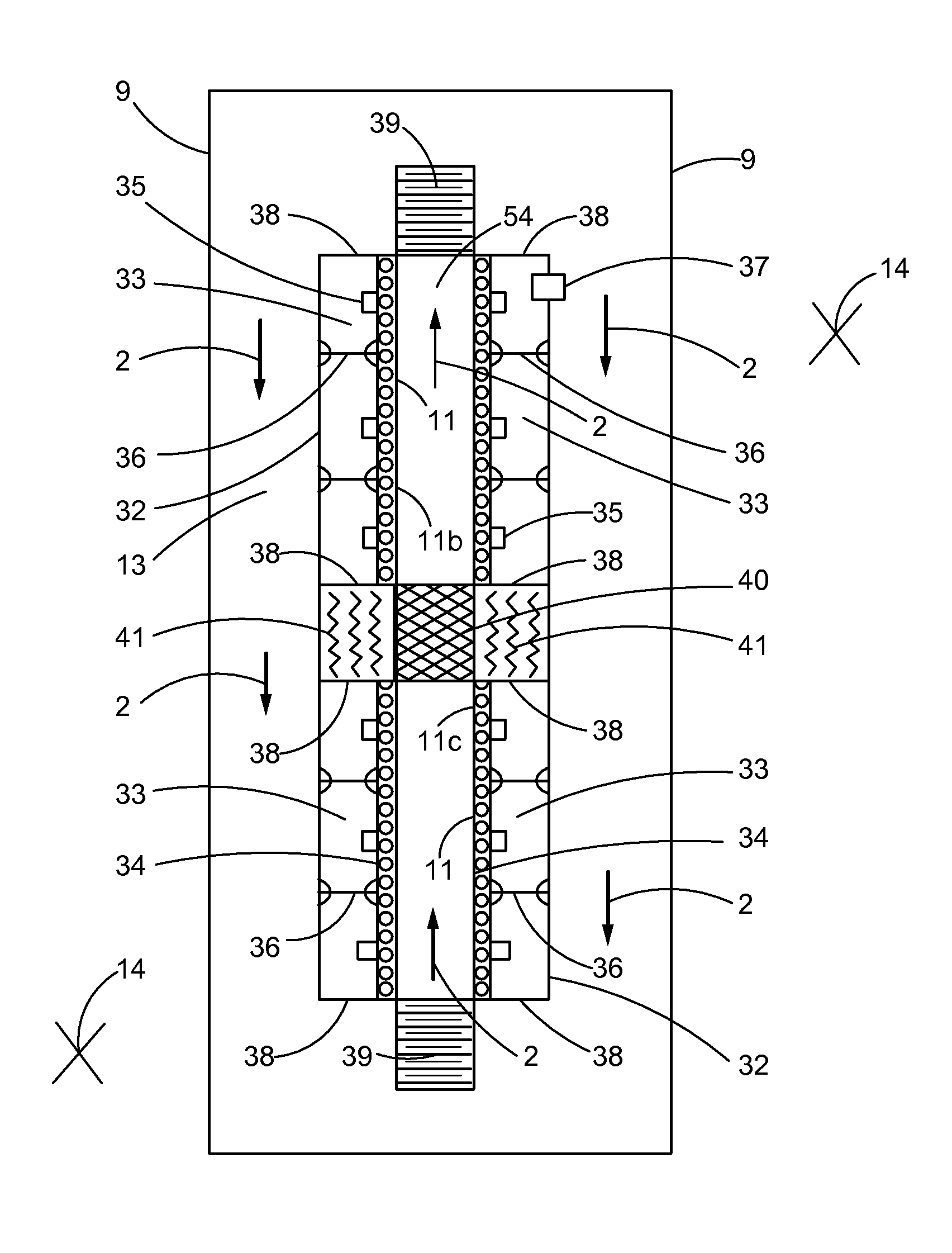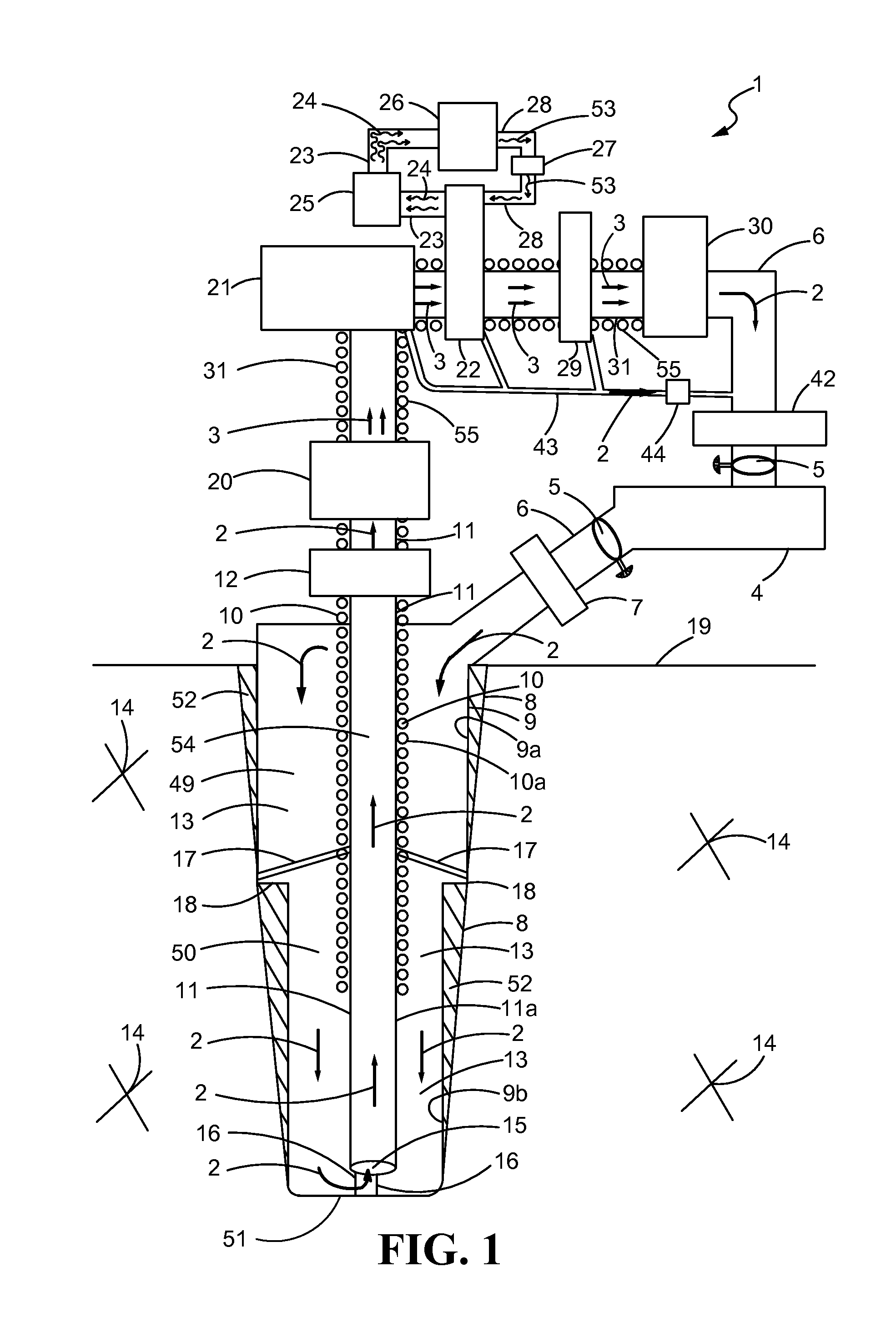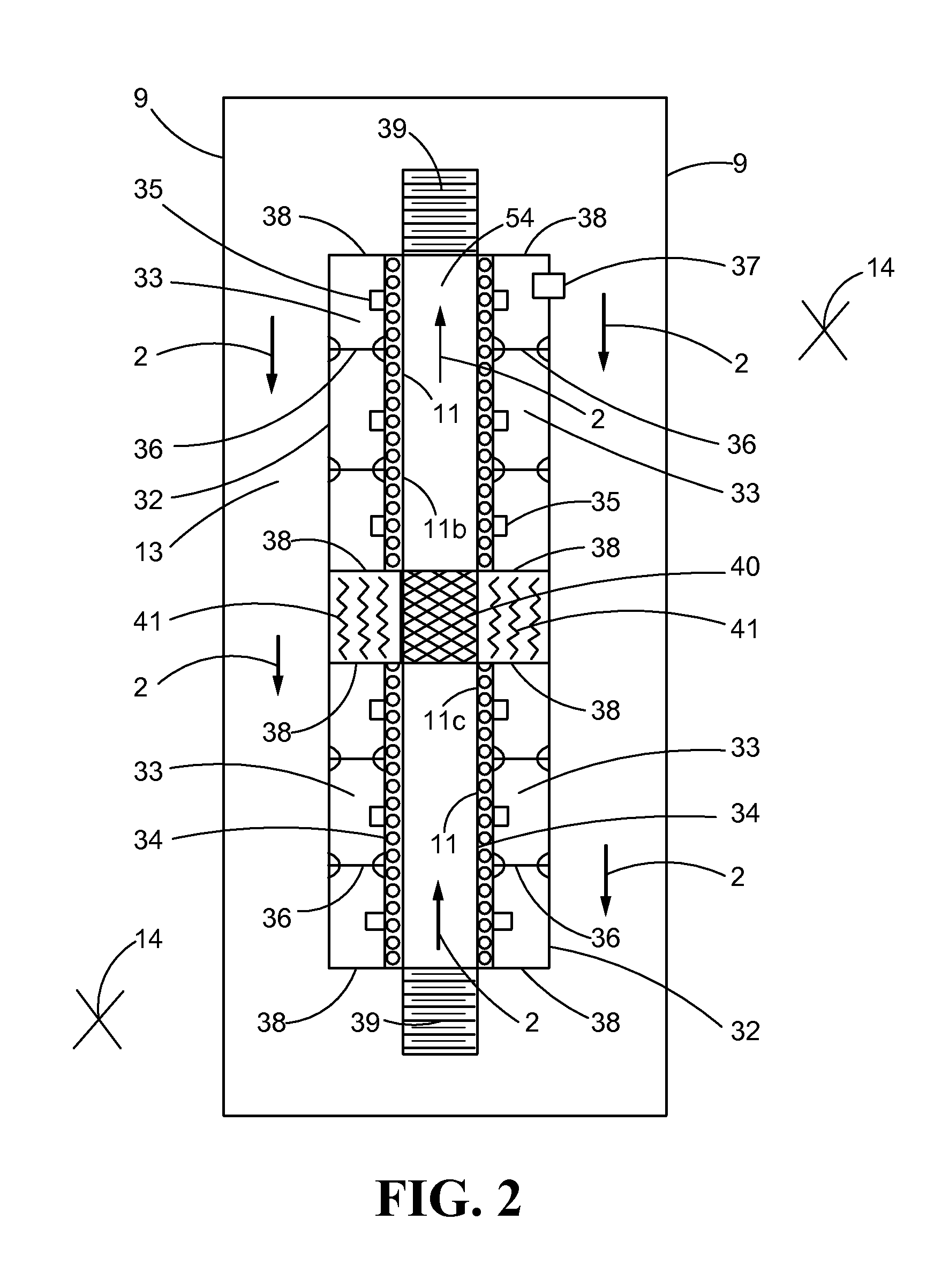Single well, self-flowing, geothermal system for energy extraction
a geothermal system and well technology, applied in the direction of machines/engines, borehole/well accessories, insulation, etc., can solve the problems of depletion of dry steam power plant installations, dry steam power plants, etc., and achieve the effect of reducing the amount of water in the original sub-surface water tabl
- Summary
- Abstract
- Description
- Claims
- Application Information
AI Technical Summary
Benefits of technology
Problems solved by technology
Method used
Image
Examples
Embodiment Construction
[0039]The following detailed description is not intended in a limiting sense, and is made solely for the purpose of illustrating the general principles of this subject matter. The various features and advantages of the present disclosure may be more readily understood with reference to the following detailed description taken in conjunction with the accompanying drawings.
[0040]Referring now to the drawings in detail, where like numerals refer to like parts or elements, FIG. 1 is a side view, not drawn to scale, of a single well, self-flowing, geothermal system 1 for at least one of power generation, heat acquisition, and energy extraction. The system 1 may have a liquid phase working fluid (the working fluid is not shown, but its directional flow is indicated by a single arrow 2 in its liquid phase, and is indicated by double arrows 3 in its vapor phase) stored in a liquid holding tank 4. For the working fluid flow direction 2 through a well 8 as shown in FIG. 1, advantageous workin...
PUM
 Login to View More
Login to View More Abstract
Description
Claims
Application Information
 Login to View More
Login to View More - R&D
- Intellectual Property
- Life Sciences
- Materials
- Tech Scout
- Unparalleled Data Quality
- Higher Quality Content
- 60% Fewer Hallucinations
Browse by: Latest US Patents, China's latest patents, Technical Efficacy Thesaurus, Application Domain, Technology Topic, Popular Technical Reports.
© 2025 PatSnap. All rights reserved.Legal|Privacy policy|Modern Slavery Act Transparency Statement|Sitemap|About US| Contact US: help@patsnap.com



